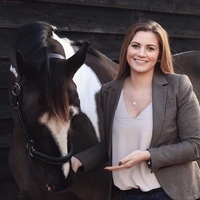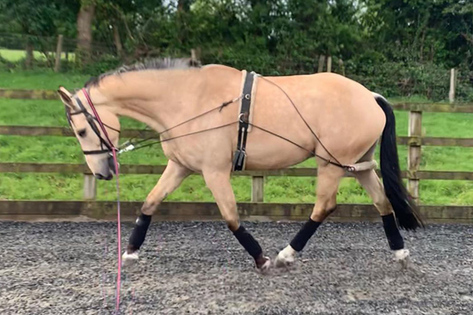
Are You & Your Horse Ready For Bitting Advice? The Steps You Need To Consider First
Equestrian Advice & Guides All Disciplines
Build your business profile for FREE and expose your services to thousands of potential clients!
Create my profile now!
Lunging a horse is a great form of training for the horse, and not only in the work they are doing at the end of the lunge line. It’s also ideal for getting them to listen and learn the handler’s commands by voice and body. Lunging helps the horse’s rhythm and balance, and regulates the gaits. There is much more to it than just going round in circles; you can make use of the whole arena or field.
Lunging a horse, young or old, before you ride can help loosen and warm up the muscles and the horse’s back, whilst having the added benefit of getting the horse listening to the handler.
Not only is lunging a horse a great way of training, it is also a form of exercise and helps fitness and flexibility. Due to the strain lunging can put on the horse, it is advised to only lunge for around 20 minutes at a time. This makes it a good alternative if you’re short for time and your horse needs to be exercised, or even if you just want to switch up your schooling work.

As with anything else, if you don’t do it correctly it can be bad for the horse. With lunging, if the ground is too soft or even too hard, it will be more strenuous on the horse and could lead to an injury. You want to ensure the horse doesn’t wizz around on a tight circle, and don’t push a horse that is unfit, as this too could cause an injury.
There are many exercises you can do with the horse on the lunge. So let’s start off with some obvious ones that I do with my own horses. Whenever I lunge, I use the whole school, working from one end and moving around towards the other end.
So, I call my basic lunging “schooling lunging” which I do with or without gadgets, and there is no other equipment required (such as poles etc). What we focus on will vary depending on what I find he needs more work with. One exercise I use involves transition work; lots of direct and indirect going up and down gaits. This gets him listening and more engaged in his hind end. (Direct transition – a transition up or down where the gait misses a gait in between - e.g. halt to trot, walk to canter. Indirect transition – a transition up or down to the gait you are doing - e.g. walk to trot, trot to walk). Another exercise I use is about lengthening and shortening the gait, changing this every circle and a half. And last but not least is the spiralling exercise; this is great ridden and on the lunge to encourage the horse to bend and be more flexible and supple. As the name suggests, the horse spirals into a tighter circle, then you push the horse out onto the bigger circle.
 Another way to lunge your horse is over poles. There are a number of different layouts you can try. Here are some of the main ones I use;
Another way to lunge your horse is over poles. There are a number of different layouts you can try. Here are some of the main ones I use;
The final way of incorporating lunging into your exercise routine is to mix jumping with lunging. You are advised NOT to use any training aids whilst doing this.

Due to the horse being on the end of the lunge line, you don’t want to work the jumps too high; it’s all about maintaining the rhythm and tempo. You can put a jump up at 12 o’clock on the circle and then once your horse accepts that, you can build it up to have another jump at 6 o’clock. You could also put a canter placing pole before and after the jump to get the horse more on its back end. Then, when your horse is fit and ready, you can include a bounce on the circle.
Don’t forget, once your horse has mastered this, you can start to include raised poles to really get your horse to pick up and engage the muscle even more.
This is certainly a controversial topic. It is a typical marmite case; some love it, some hate it. This also goes for each individual gadget and aid. Each gadget is designed to work different parts of the body and will put different levels of pressure on the horse, meaning some horses may prefer certain gadgets to others. So, make sure you do your research on the gadget and what outcome it is that you want to achieve.
Everyone has their own view on lunging aids and which gadget they think is the ‘top dog’ on the market. If you follow me on Instagram or Facebook, you’ll notice that I only lunge my horses without gadgets or with a Pessoa. I have always been a firm believer in this gadget and it provides everything I need in a lunging aid. It helps guide young horses into the correct shape and also ensures they use the correct muscles, working from the hind end up through the back and into the bit, whereas other gadgets I believe are only designed to get the head down.

I always make sure the horse is confident to be lunged without any aids, before I even think of introducing any.
Here’s a list of training aids you can use on your horse while lunging;
Here's a brief list of basic equipment needed to start lunging your horse.
Handler;
Horse;
I hope this article has helped highlight the benefits of lunging your horse, whilst giving you some inspiration for exercises to try and ways to incorporate lunging into your exercise and training routine.

